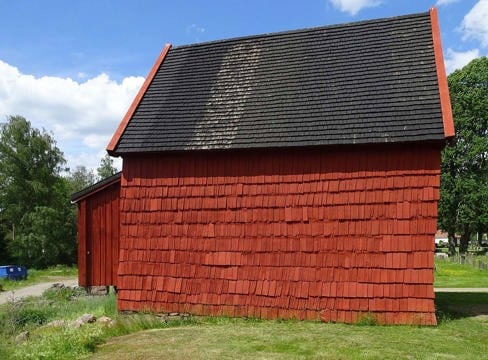In a historic building from the 1870s, Stockholm's Stadshotell opened on Södermalm in December last year. By then, the property had stood empty for decades. The interior and design are inspired by the Arts and Crafts movement, which emerged in Britain during the latter part of the 19th century. Instead of mass-produced, cheap, soulless objects, the movement sought to highlight craftsmanship, beauty and nature's forms.
And that's precisely what the hotel has done through collaborations with architects, designers and artists. One of them is Klara Knutsson, who has clad the lift with Stockholm images in intarsia – the term comes from the Italian ''intarsio'', meaning ''inlay'' or ''fitting''.
Motifs made out of thin wood veneers
The technique involves creating patterns or pictures by laying in pieces of different materials, usually wood, and creating a smooth surface. To produce and build up her motifs, Klara Knutsson uses thin wood veneers.
“Sometimes I cut with a scalpel, but this time I used a small scroll saw that looks like a sewing machine. The saw blade is angled – that's needed to achieve all the details and fitting.”
We step into the lift and Klara Knutsson says there were certain challenges because it's so small, approximately 3.5 square metres. To create a sense of space, the starting point was views – rather like a window onto Stockholm.
“I also knew I didn't want to include only the most well known landmarks. Those, for instance, are the tower blocks up on Danviksklippan where I live. I think they're so beautiful. And that's the district heating plant at Henriksdal.”
It's an unusual sensation to stroke the flat surface whilst the eye perceives different levels and dimensions. The attention to detail is impressive. There are roses, where each petal has been sawn out, and people who have literally been puzzled together bit by bit. The work looks like a whole, like one large picture, but actually consists of eight separate panels that have been joined together with thin wooden strips. Getting everything to fit together was a challenge.
“You have to be a bit clever,” says Klara Knutsson, adding that she likes to play with scale and perspective.
“As you can see, the people are far too large. I've been given great freedom to interpret and use my own frames of reference – it's been a wonderful process.”
Klara Knutsson has worked with intarsia for three years; her interest began during her furniture-making training at Malmstens.
“Everyone who's studied carpentry programmes at Malmstens (Linköping University) or at Capellagården (Vickleby, Öland) learns the basics of intarsia. But vanishingly few choose to continue working with the technique.”
She herself feels there's much left to learn and explore – whilst simultaneously preserving cultural-historical value in a technique that has existed since medieval times. In more modern times, the craft experienced a revival in the 1920s–1930s, but from the 1970s it began to fall into obscurity.
“I run some courses, and it feels like interest in intarsia is growing, as it is for other traditional woodworking techniques. I think that in turn is connected to growing sustainability thinking.”
Do you see yourself as a pioneer?
“Well, I wouldn't use that word. I'm just incredibly happy to be able to contribute to the technique and craft continuing to exist. I rather see that the Stadshotell are pioneers who chose to let me do this.”
Text: Susanne Glennegård Photo: Johan Linnander






